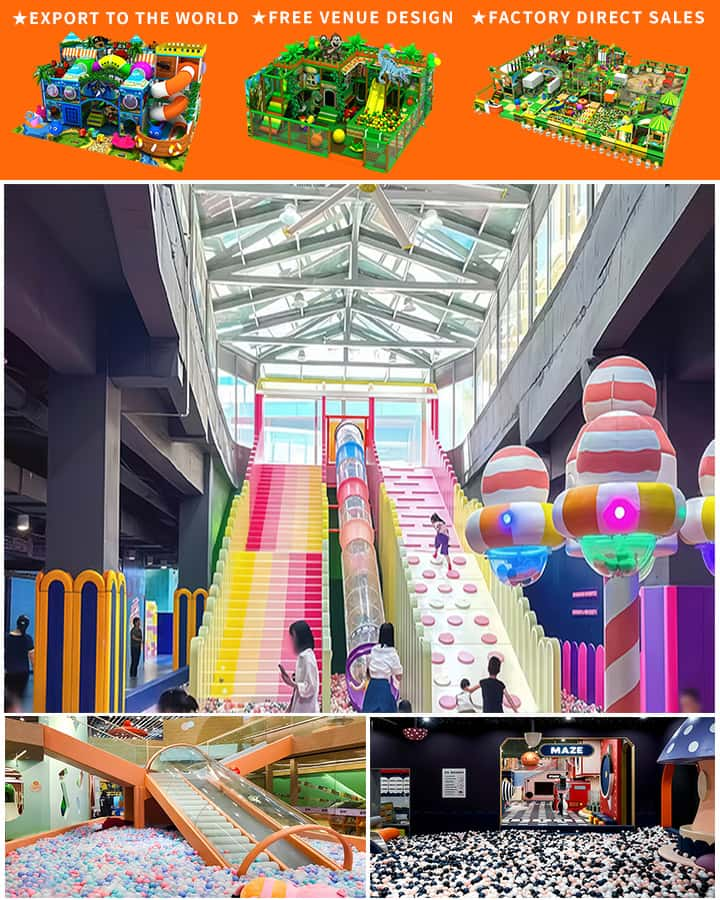In recent years, indoor playgrounds have become a popular family outing destination, offering a safe, engaging environment for children to play irrespective of weather conditions. With their rise in popularity, many prospective entrepreneurs wonder about the financial viability of owning and operating an indoor playground. This article delves into the factors that influence the earnings of indoor playground owners, aiming to provide a comprehensive overview of potential profits.
Factors Affecting Earnings
- Location
- Prime vs. Secondary Markets: The location of an indoor playground significantly impacts revenue. Establishments situated in prime urban areas with high footfall tend to attract more visitors compared to those in suburban or rural areas.
- Accessibility: Proximity to major highways, public transportation, and residential areas also plays a crucial role. High accessibility generally translates to higher customer convenience and increased visitation rates.
- Size and Facilities
- Play Area Size: Larger play areas can accommodate more visitors simultaneously, increasing revenue potential.
- Variety of Attractions: Offering a wide range of attractions such as ball pits, climbing frames, slides, and interactive games can enhance visitor experience and encourage repeat visits.
- Operational Costs

- Rent: Depending on the location, rent can be one of the most significant expenses. Urban centers often demand higher rental fees, impacting overall profit margins.
- Utilities and Maintenance: Regular upkeep of facilities, cleaning, and utility payments are ongoing costs that need to be managed efficiently.
- Staffing: Hiring trained personnel to supervise and ensure safety adds to operational overheads but is essential for smooth operations.
- Marketing and Branding
- Brand Recognition: Successfully marketed brands tend to attract more visitors due to established trust and reputation.
- Customer Engagement: Effective marketing strategies, including social media campaigns, loyalty programs, and community engagement activities, can boost visibility and patronage.
Financial Projections and Realistic Expectations
The financial success of indoor playgrounds varies widely based on multiple factors. However, industry reports and case studies provide some insight into average earnings. According to various sources, indoor playground owners can expect revenues ranging from \(300,000 to \)1 million annually. Net profits usually fall between 10% and 30% of total revenues after accounting for all operational expenses.
Case Studies
- Urban Indoor Playground: An indoor playground located in New York City reported annual revenues of approximately \(850,000 with net profits around \)250,000. Its strategic location and diverse attractions helped attract a consistent flow of customers.
- Suburban Setup: A similar facility in a suburban area achieved annual revenues of about \(450,000 with net profits of roughly \)75,000. Despite being well-equipped, it struggled with lower foot traffic compared to its urban counterpart.
Key Strategies for Maximizing Profits
Optimizing Operations: Streamlining operations to reduce costs without compromising quality can significantly boost profitability. Using efficient scheduling, investing in durable materials, and regular staff training are effective strategies.
Enhancing Customer Experience: Providing exceptional customer service and maintaining a clean, safe environment encourages word-of-mouth referrals and repeat business. Hosting special events like birthday parties or themed playdays can also generate additional revenue streams.
Leveraging Technology: Implementing a robust point-of-sale system for efficient transactions, employing online booking for events, and utilizing social media for targeted advertising can enhance operational efficiency and attract more customers.
Diversifying Services: Offering complementary services such as cafes, party hosting services, or retail shops for toys can diversify income sources and increase overall profitability.
Conclusion
Owning an indoor playground can be a profitable venture, but successful operation hinges on strategic planning, optimal location selection, and efficient management practices. While earnings vary, understanding the critical factors influencing profitability can help aspiring owners make informed decisions and navigate the challenges of running such an establishment. With careful planning and execution, indoor playgrounds offer a promising opportunity for enterprising individuals looking to tap into the thriving family entertainment market




